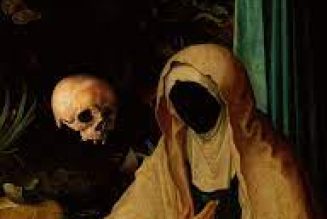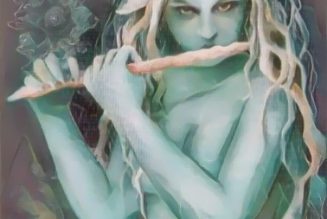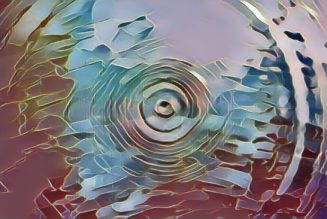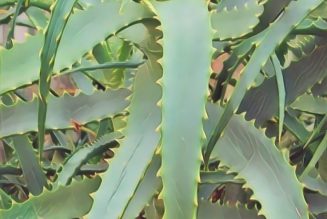Bury St. Edmonds Witches Of the various witch trials of Suffolk, England, conducted in Bury St. Edmonds during the 17th century, two episodes stand out.
In 1645, 68 witches went to their deaths on the gallows, victims of the witch-hunting zeal of Matthew Hopkins and John
Stearne. Seventeen years later, in 1662, Sir Matthew Hale presided over trials that led to the condemnation and execution of two witches based on the flimsy spectral evidence of hysterical, “possessed” children.
The 1662 trials heavily influenced officials of the Salem witch trials
in 1692–93, the worst witch incident in the history of America Bury St. Edmonds Witches.
The Hopkins trials. In 1645 Matthew Hopkins, England’s most notorious witch-hunter, and his associate, John Stearne, a rigid Puritan, were storming about the countryside routing out “witches” in exchange for exorbitant fees.
Using unscrupulous methods to extract confessions, the witch-hunters, according to surviving records, charged at least 124 Suffolk men and women with witchcraft, who were tried at Bury St. Edmonds in August.
Most of the “confessions” concerned the possession by evil imps, the making of compacts with the Devil, and having carnal relations with the Devil, the latter of which was guaranteed to inflame Puritan outrage.
Some of the witches also were charged with the murder of livestock and people.
Victims were thoroughly searched for witch’s marks , a most humiliating ordeal for women, since the “marks” usually were found in or on the genitals.
These marks, which were said to be supernumerary teats from which imps sucked, were discovered in the folds of the labia or were sometimes the clitoris itself.
Stearne had a particular fondness for searching for witch’s marks and boasted that 18 of the Bury St. Edmonds witches “all were found by the searchers to have teats or dugs which their imps used to suck. . . . And of these witches some confessed that they have had carnal copulation with the Devil, one of which said that she had conceived twice by him, but as soon as she was delivered of them, they ran away in most horrid, long and ugly shapes.”
Men also were said to have these teats.
John Bysack confessed that he had been compromised 20 years earlier by the Devil who came in through his window in the shape of a sandy-colored, rugged dog and demanded that Bysack renounce God, Christ and his baptism.
Bysack agreed, and the Devil used his claw to draw blood from Bysack’s heart.
The Devil gave him six imps in the forms of snails, who sustained themselves by sucking Bysack’s blood.
Each snail was an assassin with a particular assignment: Atleward killed cows, Jeffry pigs, Peter sheep, Pyman fowls, Sacar horses and Sydrake Christians.
Stearne claimed he found snail marks on Bysack’s body.
Margaret Wyard confessed to having seven imps, including flies, dogs, mice and a spider.
She had only five teats, however, which forced her imps to fight “like pigs with a sow.”
Wyard said the Devil had come to her seven years earlier in the likeness of a calf, saying he was her husband. She would not submit sexually to him (a comment, perhaps, on the state of her marriage) until the Devil returned as “a handsome young gentleman.”
Imps of other accused witches included a chicken named Nan; two “heavy and hairy” mice; and three imps “like chickens.”
Stearne recorded that 68 witches were executed; one who was tried at Ipswich instead of Bury St. Edmunds reportedly was burned to death. Dozens more may have been hanged—records are uncertain—and still others died in prison.
Ironically, Parliament had established a special commission to oversee witch-hunting activities, in response to reports of excesses.
The commission, however, benignly accepted the “evidence” for Devil’s pacts and the existence of imps, leaving Hopkins and Stearne free to wreak their havoc for another two years.
The hysterical children of 1662. Rose Cullender and Amy Duny of Lowestoft, Suffolk, were two old widows who were accused of bewitching seven children, one of them to death, and performing various other malicious acts upon their neighbors over a period of years.
Sir Matthew Hale (later Chief Justice), who heard the trials, was a believer in witchcraft and did nothing to discourage the most outrageous accusations.
The trials of the two unfortunates were recorded by Cotton Mather in On Witchcraft: Being the Wonders of the Invisible World (1692).
Duny’s fate as a witch was sealed when she was hired as a baby-sitter by Dorothy Durent for her infant.
Duny tried to nurse the baby, William, contrary to Durent’s instructions, and was reprimanded, much to her (obvious) displeasure.
Not long after, the baby began having fits that went on for weeks.
Durent took it to a “white witch” doctor (a man), who told her to hang the child’s blanket in a corner of the chimney for a day and a night, then wrap the infant in it and burn anything that fell out. According to Mather:
. . . at Night, there fell a great Toad out of the Blanket, which ran up and down the Hearth.
A Boy catch’t it, and held it in the Fire with the Tongs: where it made a horrible Noise, and Flash’d like to Gun-Powder, with a report like that of a Pistol: Whereupon the Toad was no more to be seen.
The child recovered. The next day, Duny reportedly was seen with burn marks.
Now labeled a witch, Duny was accused of causing fits in other children who had had contact with her.
The Durents’s 10-year-old daughter, Elizabeth, fell into fits, complaining that the specter of
Duny plagued her.
The girl became lame in both legs and died within three days. Mrs. Durent herself went lame and had to walk about with crutches.
Another Durentchild, Ann, suffered fits and swooning spells and vomited pins, blaming her maladies on the specter of Rose Cullender.
The nine- and 11-year-old daughters of Samuel Pacy, Deborah and Elizabeth, suffered fits that included lameness, extreme stomach pain as though being stabbed with pins and “shrieking at a dreadful manner, like a Whelp, rather than a rational creature.”
They also vomited crooked pins and a two-penny nail.
These girls cried out against Duny and Cullender, claiming to see them as specters, and saying that the witches threatened them not to talk, lest they be tormented 10 times greater than before.
The Pacy girls could not pronounce the names of Lord, Jesus or Christ without falling into fits. But the names of Satan or the Devil made them say, “This bites, but it makes me speak right well!”
The Pacy children also saw invisible mice, one of which they threw on the fire, and it “screeched like a Rat.” Another invisible mouse thrown on the fire “Flash’d like to GunPowder” just like the toad of Durent.
The specter of Duny, meanwhile, tempted one of the girls to destroy herself. Jane Bocking was so afflicted with fits and pain caused by the specters of Duny and Cullender that her mother had to testify in her place.
Another girl, Susan Chandler, said Cullender would come into her bed, and that she was accompanied by a great dog. Chandler had fits and vomited pins. Cullender was searched for a witch’s mark. According to Mather.
They found on her Belly a thing like a Teat, of an inch long; which the said Rose ascribed to a strain. But near her Privy-parts, they found Three more, that were smaller than the former. At the end of the long Teat, there was a little Hole, which appeared, as if newly Sucked; and upon straining it, a white Milky matter issued out.
To bolster the testimony of the girls and their families, the court heard “evidence” from others. John Soam testified that one day, while he was bringing home his hay in three carts, one cart wrenched the window of Cullender’s house. She flew out in a rage, shouting threats
against Soam. The cart that wrenched the window later overturned two or three times the same day. The men had such difficulty with the carts—one got stuck in a gate, so that the gateposts had to be cut down—and were so exhausted that their noses bled.
Robert Sherringham testified to a similar incident, in which the axle-tree of his cart broke off a part of Cullender’s house. (Perhaps Cullender’s house was in an unfortunate position on a roadway; if these accidents happened regularly, it is understandable that she would
lose her temper.) In an angry fit, Cullender told him his horses should suffer for it. Within a short time, his four horses died, followed by many of his cattle. Sherringham also was afflicted with lameness and was “so vexed with Lice of an extraordinary Number and Bignes, that no Art could hinder the Swarming of them, till he burnt up two Suits of Apparel.”
As for other testimony against Duny, she was said to have been overheard saying the Devil would not let her rest until she revenged herself on the wife of one Cornelius Sandswel. The Sandswels’ chimney collapsed and their chickens died suddenly.
Sir Thomas Browne, a respected physician, testified that the victims were bewitched and commented that witches discovered in Denmark afflicted their victims in the same manner, with fits and vomitings of pins. Mather wrote of Hale’s instructions to the jury: He made no doubt, there were such Creatures as Witches; for the Scriptures affirmed it; and the Wisdom of all Nations had provided Laws against such persons.
He pray’d the God of Heaven to direct their Hearts in the weighty thing they had in hand; for, To Condemn the Innocent, and let the guilty go free, were both an Abomination to the Lord.
The jury took exactly half an hour to convict Duny and Cullender on 19 counts of witchcraft. The next morning, the children were miraculously restored to good health. Duny and Cullender confessed nothing, and were hanged.
When the witch hysteria broke out in Salem in 1692, the authorities took their cue from the 1662 Bury St. Edmonds trials and Hale’s reputation as a judge. As Mather wrote in Wonders of the Invisible World:
It may cast some Light upon the Dark things now in America, if we just give a glance upon the like things lately happening in Europe. We may see the Witchcrafts here most exactly resemble the Witchcrafts there; and we may learn what sort of Devils do trouble the World.













